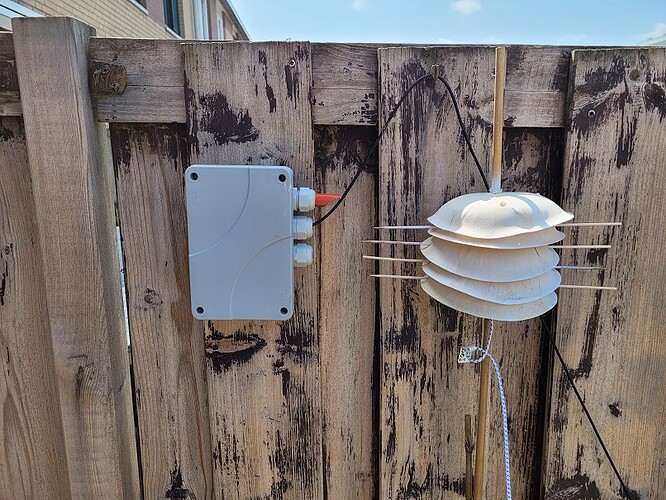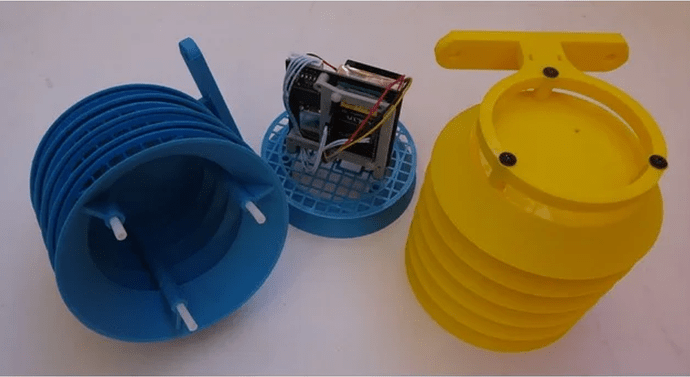time for me to end this project and cleanup. I’ve created a messy prototype and these are my findings. The purpose was to create something similar to a stevenson screen with natural materials. The material of the bowls is very light but actually pretty solid. It is water resistant for a long time and very flexible. great for prototyping because it’s easy to bend or cut through. Unfortunately the bowls I used, were too small for the SDS011 which made it difficult to fasten the dishes in a good way. The bowls also differ a bit in shape.
When it comes to measurements, the prototype is more accurate then my previous cage. The temperature fluctuates more, i.e. one moment it can be 0,5C degrees lower or higher than 145seconds later but it is closer to the temperature given by the weather channels.
My garden is surrounded by stone walls and it’s incredible how much the temperature is influenced by this. I was watering my plants two days ago and sprayed some water on the stones in the garden and the walls of the house and the temperature dropped with 2C degrees.
Here are some pictures of my previous cage and the prototype with only a BME280, the protype on the bamboo pole ( i had two bamboo poles tighten together to place it exactly next to my previous cage) and the graph which shows the fluctuation.
Maybe you like my design of a stevenson cage https://www.thingiverse.com/thing:3181167
Achim
Nice! But as was said above it has following drawbacks:
- Does not scale good enough (one need to print all the parts)
- Made of extruded plastic which might degrade over time. Yet plastic is not ecological.
Yet I recommend to print all details from white plastic so it will deflect sun.
To my mind the best solution would be made of painted in white colors wood…
I like this style of housing more than my previous housing. the purpose of my project was to see if I could make this style of housing with natural and easy to get materials. My test project is still operational by the way but if you don’t mind the materials and if you like prototyping with a 3d printer then this is a good alternative. I definitely recommend this style of housing. It optimises the use of the sensor because it can react faster to changes.
Enclosure designs are on the Github: Case designs · opendata-stuttgart/meta Wiki · GitHub
Yes, ours is made of hard-wood and is, by now, 45 years old. It has some scratches and cracks, but is mostly still in tact. We renovated it last year, new paintjob, new bolts and screws and it works like new again. I’ll post some pics soon.
Stone is a ridiculous heater, indeed. I once measured 78 degrees Celsius on our pavewalk on a hot Summerday with a flir device.



